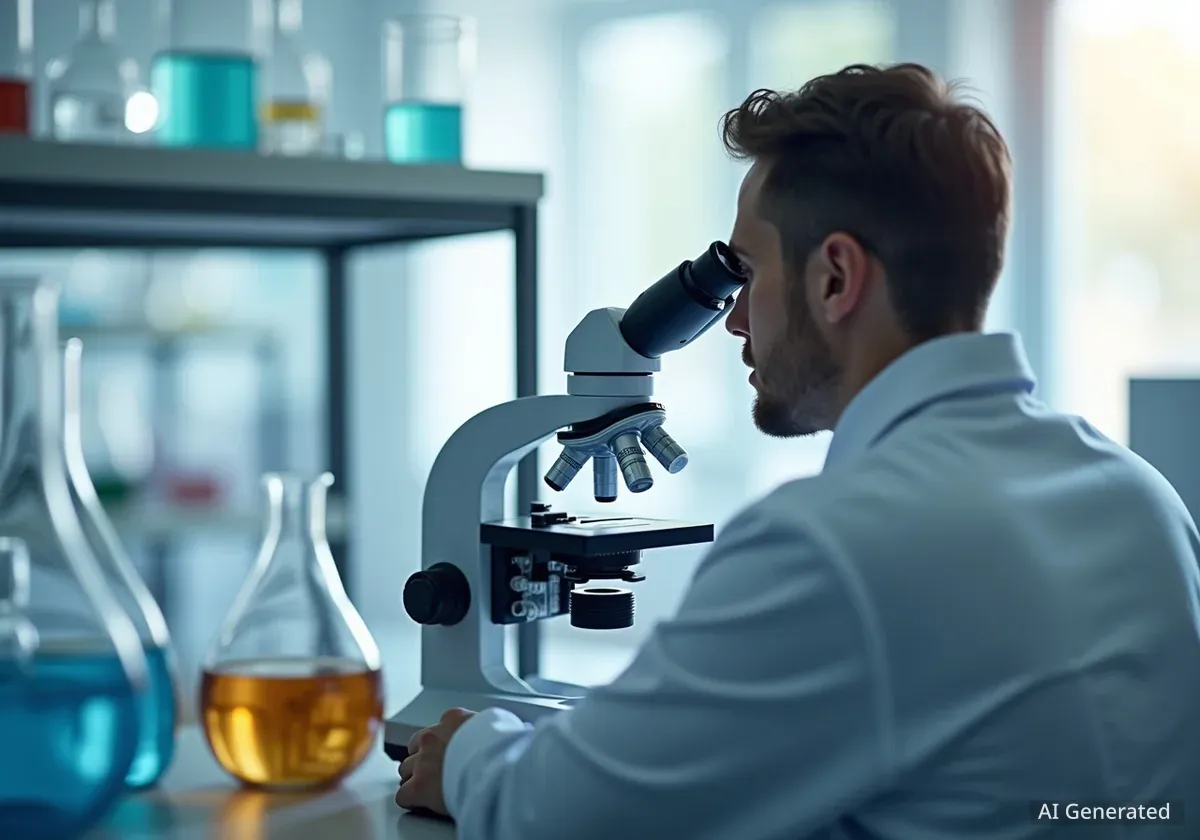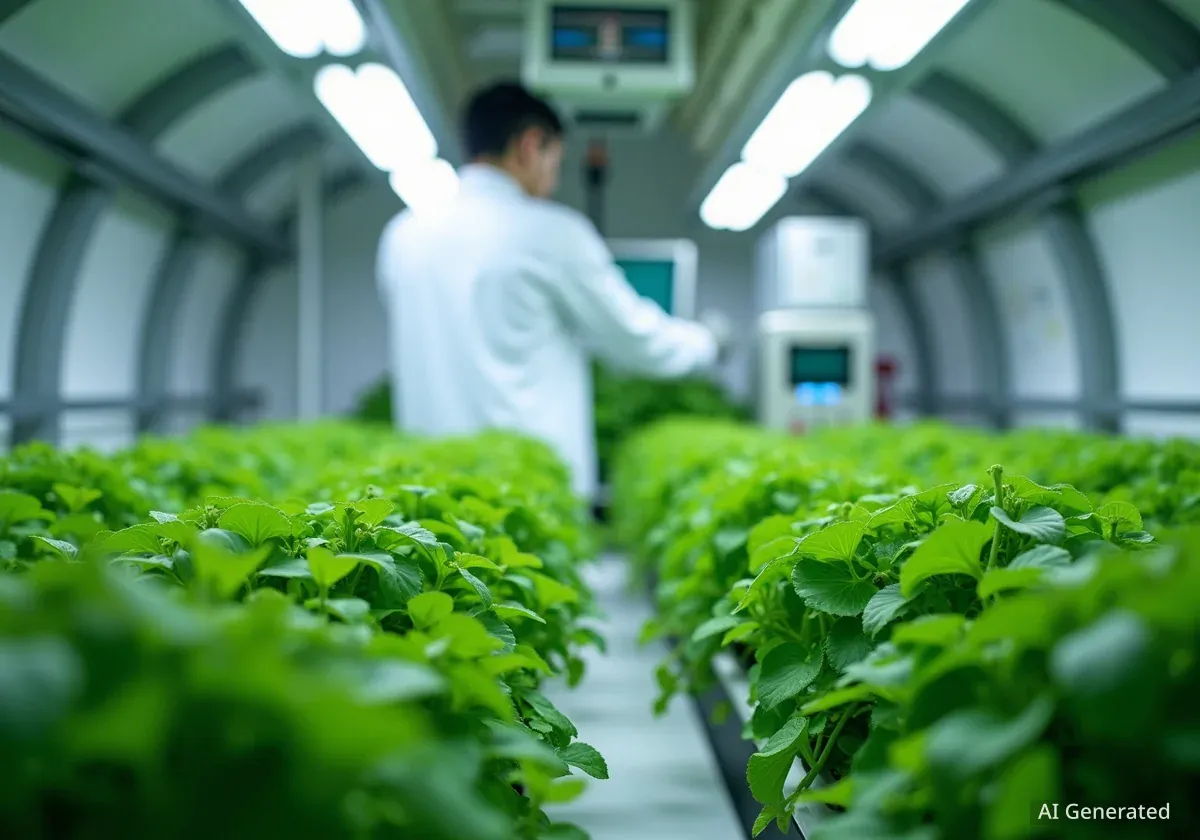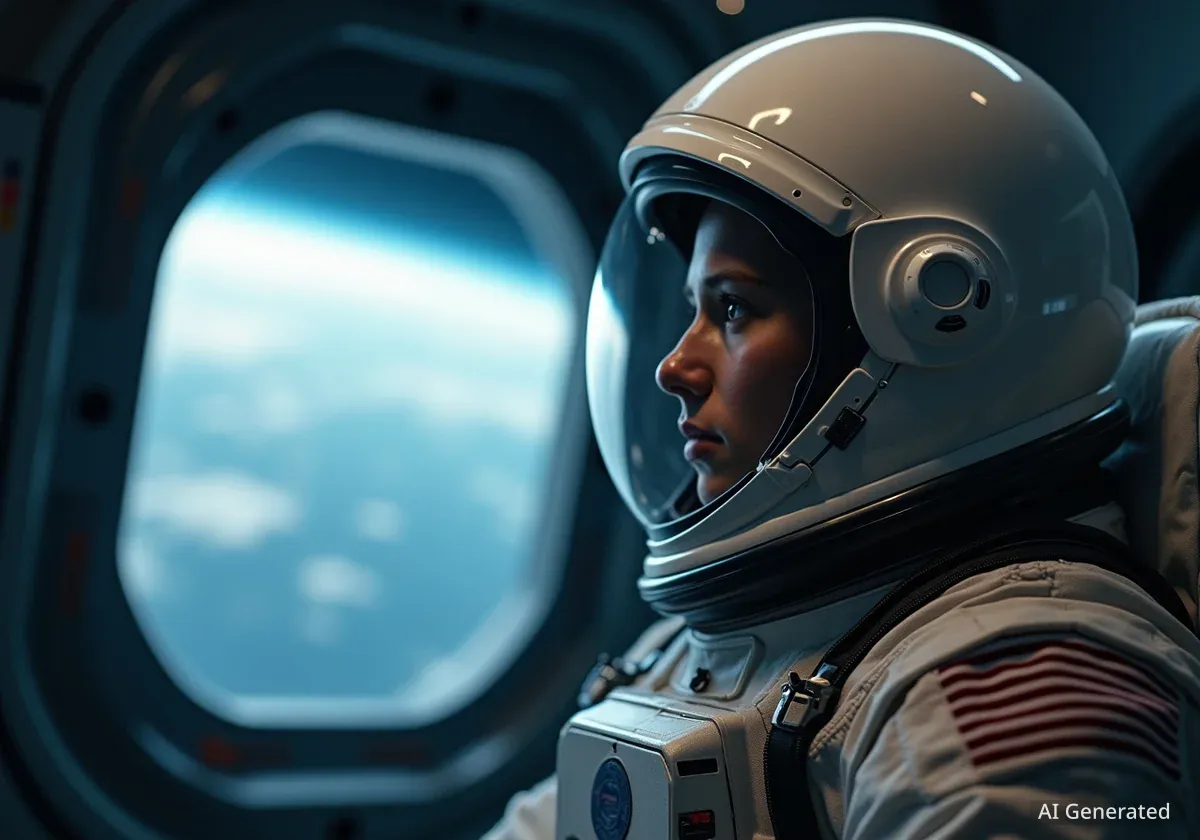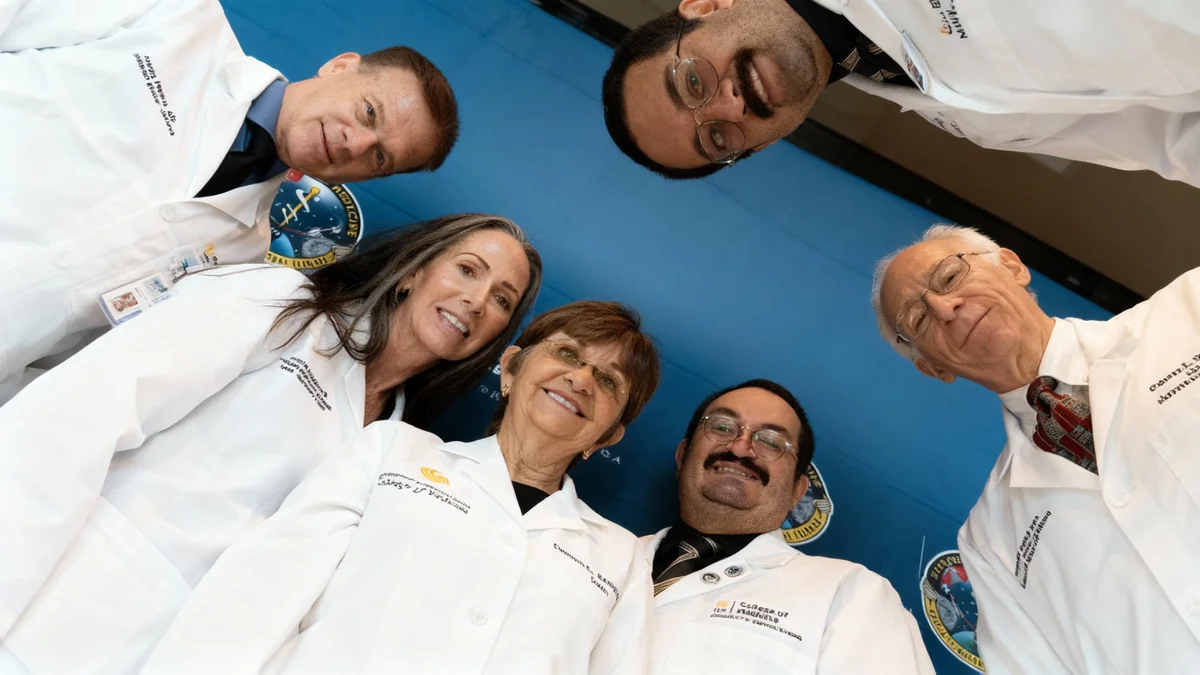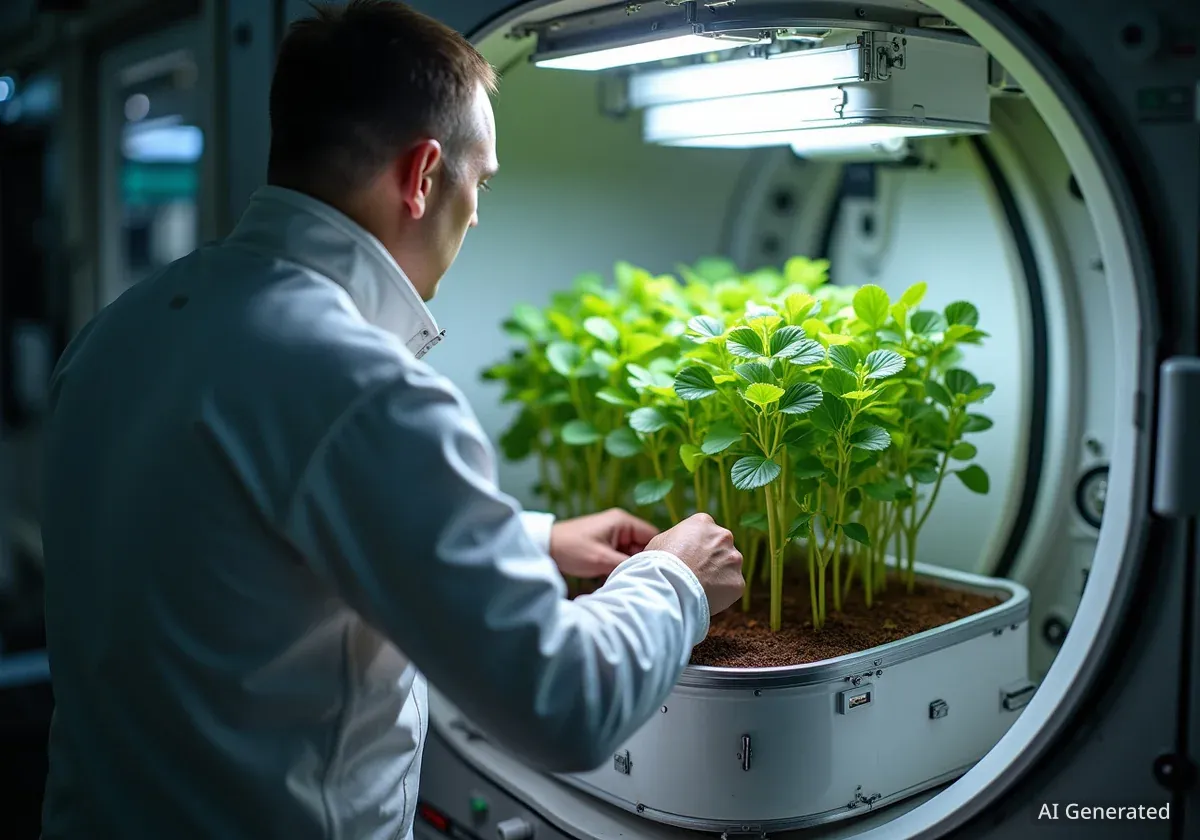A new study from the University of Florida offers critical insights into how spaceflight accelerates muscle deterioration. By sending bioengineered human muscle tissue to the International Space Station, researchers have identified key biological changes that could lead to new treatments for astronauts on long missions and for individuals with age-related muscle loss on Earth.
Key Takeaways
- University of Florida researchers sent bioengineered 3D muscle tissues, known as "tissue chips," to the International Space Station to study the effects of microgravity.
- The study found that younger muscle tissue undergoes more significant biological changes in space compared to older tissue, particularly in energy-producing mitochondrial pathways.
- In microgravity, the contraction ability of younger muscle tissue decreased significantly, suggesting it is more susceptible to the effects of the space environment.
- Findings from this research aim to protect astronaut health during long-duration missions to Mars and accelerate the development of therapies for age-related muscle wasting on Earth.
The Challenge of Muscle Atrophy
One of the most significant health risks for astronauts embarking on long-duration space missions, such as a journey to Mars, is rapid muscle atrophy. In the absence of Earth's gravity, muscles weaken and lose mass at an accelerated rate, posing a threat to mission success and long-term astronaut health.
This same process of muscle deterioration occurs on Earth, though much more slowly, as a natural part of aging. Known as sarcopenia, age-related muscle loss can lead to frailty, reduced mobility, and an increased risk of falls and injury in older adults. Understanding the mechanisms behind this decline is a major goal for medical science.
A Dual-Purpose Investigation
The research, led by Dr. Siobhan Malany of the University of Florida's College of Pharmacy, was designed to address both challenges simultaneously. By studying how muscle cells adapt in the extreme environment of space, scientists can observe biological changes that would take years to manifest on Earth.
A Miniature Lab in Orbit
To conduct their experiment, Dr. Malany's team developed a sophisticated method for studying human tissue in orbit. They used donated biopsy cells from both younger and older individuals to create bioengineered, three-dimensional muscle tissues. These miniature, functional tissues are often called "tissue chips."
The CubeLab System
These tissue chips were housed inside a fully autonomous miniature laboratory about the size of a shoebox. Called a CubeLab, the device was designed in collaboration with aerospace company SpaceTango and flown to the International Space Station on multiple SpaceX missions.
Inside the CubeLab, the muscle tissues were kept alive with a continuous supply of nutrients. The system also administered small electrical pulses to stimulate the muscles, causing them to contract. An internal camera system recorded the rate and force of these contractions, providing valuable data on muscle function.
"This research is about more than just space," Dr. Malany stated. "By understanding how muscle tissue deteriorates much faster in microgravity, we can uncover new strategies to address muscle loss that occurs naturally with aging and with age-related diseases here on Earth."
Key Discoveries from Microgravity
The study yielded several important findings after analyzing the data from the orbiting muscle tissues and comparing them to control samples on Earth. The results highlighted a distinct difference in how younger and older muscles respond to the space environment.
Younger Muscle Shows More Pronounced Changes
Researchers observed that the younger muscle tissue exhibited more significant alterations in its mitochondrial pathways. These pathways are crucial cellular systems responsible for generating energy. The disruption in microgravity suggests that the energy production process in younger muscle cells is more heavily impacted by the absence of gravity.
Contraction Ability in Space
While on Earth, older muscle tissue typically responds less to electrical stimulation than younger tissue. However, in space, the younger tissue experienced a noticeable drop in its ability to contract. This suggests that while older muscle is already weaker, younger muscle undergoes a more dramatic functional decline when introduced to microgravity.
These insights are critical for mission planners. They indicate that even young, healthy astronauts are highly susceptible to rapid muscle deconditioning and that protective countermeasures are essential for any long-term mission beyond Earth's orbit.
Broader Implications for Health
The University of Florida's research extends far beyond the confines of space exploration. The accelerated model of muscle aging provided by microgravity experiments offers a unique platform for developing and testing new medical treatments.
Advancing Geriatric Medicine
By identifying the specific biological pathways that are affected first, scientists can target them with new therapies. The goal is to develop treatments that could slow or even reverse age-related muscle loss on Earth, improving the quality of life for millions of elderly individuals.
The use of tissue chips is also a significant step forward. These small, bioengineered devices that mimic human organ function can provide data more quickly and accurately than traditional animal studies. This approach has the potential to accelerate the discovery of new drugs for muscle-wasting conditions.
Future Directions and Collaborations
This project is a component of a larger initiative at the University of Florida's Astraeus Space Institute, which unites experts from medicine, engineering, and plant science to tackle the challenges of space exploration. The institute fosters a collaborative environment for groundbreaking research.
Key partners in this effort include:
- AdventHealth: Provided donated tissue samples used to create the muscle chips.
- SpaceTango: A NASA-certified company that co-designed the CubeLab hardware.
- Kennedy Space Center Consortium: An initiative that brings together universities, government, and industry leaders in Florida.
Creating Astronaut 'Avatars'
Looking ahead, Dr. Malany and her team are developing new methods to study cells derived directly from astronauts. By using blood samples, they can generate both skeletal and heart muscle cells, creating personalized cellular "avatars."
These avatars will allow researchers to track biological changes in individual astronauts before, during, and after space missions. This provides an unprecedented window into the physiological effects of spaceflight and a platform for testing potential therapies tailored to an individual's biology.
"Now we can study cells from individual astronauts and see how they respond over time," Dr. Malany explained. "This helps us understand the risks of long-term spaceflight and also gives us a platform for testing potential treatments for muscle-wasting conditions on Earth."
As humanity prepares for its next giant leap into the solar system, this foundational research is helping to ensure that astronauts can travel farther and live healthier in space, while simultaneously bringing tangible medical benefits back home.

